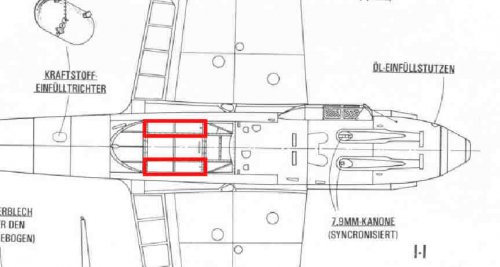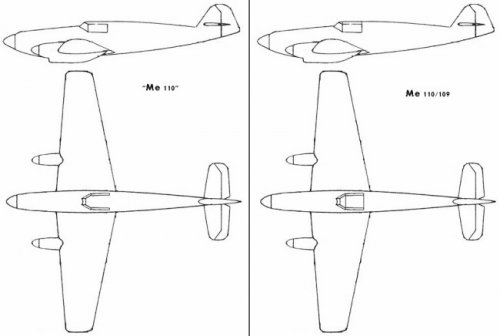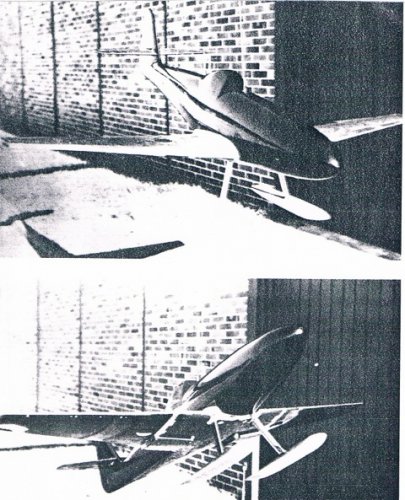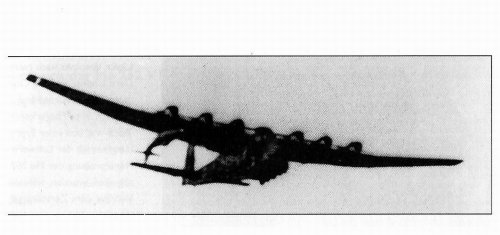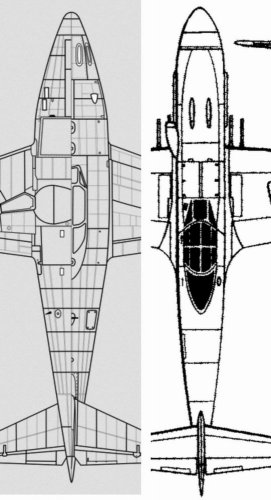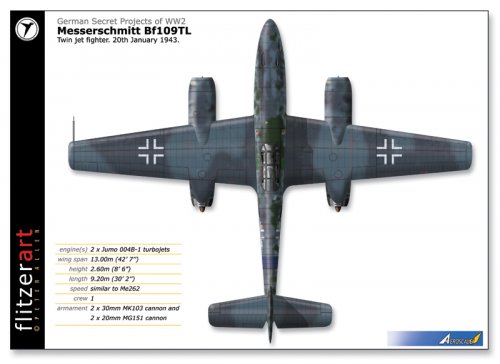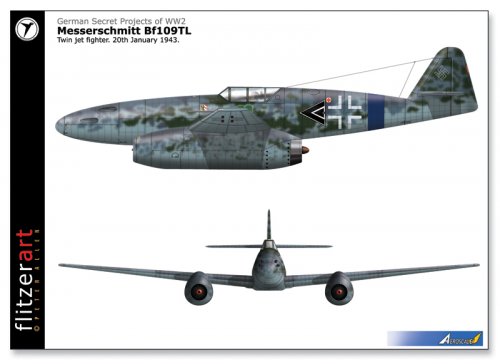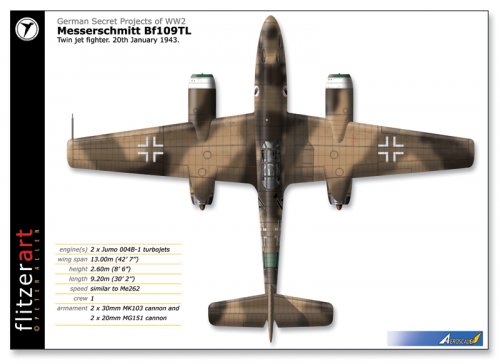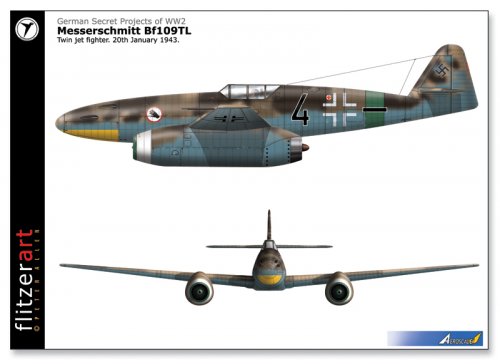Jemiba said:
Honestly, I don't believe in the statement "... the original shape of the Bf 110", as the Bf 110
was never planned as a 3-engined fighter.
But the next sentence "... as tested in January 1936 by the AVA in Göttingen makes it quite clear,
I think, that our assumption was correct, although it still doesn't answer the question:
Recycling of an "old" wind tunnel model, or preparation of a Bf 109 based flying testbed.
But thabnks for pointing to the unicraft site again, hadn't seen this explanation before,
seems to have been addded aftre we started this discussion.
I can't remember where, but I recall seeing a photo of an obviously improvised wind tunnel model in this configuration.
Moreover, on p 155,
The History of German Aviation, Willy Messerschmitt: Pioneer of Aviation Design by Ebert, Kaiser, and Peters, trans. Theriault and Cox (Schiffer, 1999) includes a drawing of this configuration labeled "Me 110 Modell" and "Messerscmitt A.G. Projectbuero Gruppe Flugeigenschaften" (I used "ue" for the umlauted "u"). Dimensions are given, with the top-most labeled "cm", and the fuselage length labeled "1236". These dimensions seem consistent with a windtunnel model, and the caption says that a model of this form was, in fact, tested at the AVA tunnel in Goettingen in 1936.
I do not speak German. But "Gruppe Flugeigenschaften" looks like it might mean something like "flight characteristics department". So I wonder if the configuration is merely part of the initial concept-definition phase for an eventual twin-engined fighter. The drawing would then represent proposed changes to an existing wind-tunnel model, not a proposed design for a full-scale aircraft. I suspect that the team chose to modify an early model from the concept definition phase for the 109, because the drawing is only superficially similar to any of the 109s that were actually built. Wind tunnel models are expensive, labor-intensive products that were clearly being reused when I visited NASA's Moffet Field tunnel some years ago. So repurposing a model on hand that shared the general aerodynamic and structural characteristics of the planned aircraft would make perfect sense.
Such a model might even offer some useful degree of control over the experimental data. The only change from the known characteristics of the single-engined fighter is the provision of twin nacelles. So any radically different behavior in the wind tunnel could be put down to this key characteristic of the proposed Bf110.
Be that as it may, the caption in the book says that data from the Goettingen tests led directly to the decision to adopt twin fins and rudders for the 110.
The moral of our story is that you can't read too much into a word like "orginal". This drawing could, in fact, be the "original" shape of the 110, in the sense that it might have been the first test shape tried by the experimental team. It just wasn't the
intended shape of a real airplane--the plans were for a model that tested part of the concept. A plan only tells us that
something was planned. We need to be careful about assuming what it was.
So one can build an authentic replica using the Unicraft kit. One just needs to fill any and all panel lines, sand all surfaces smooth, and paint everything black or gray.

